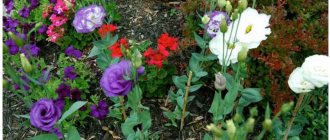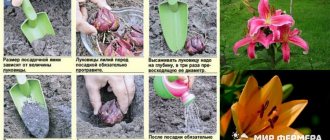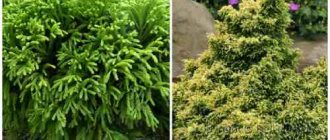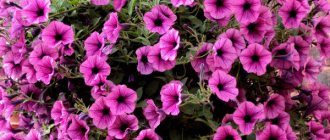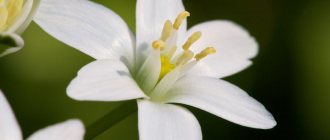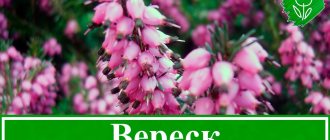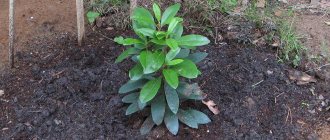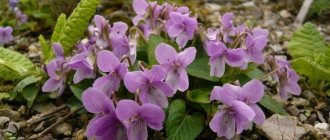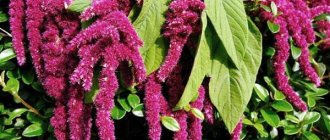Asplenium or kostenets is a spectacular and unpretentious fern that can be grown both as a herbaceous plant for the open ground of a personal plot, and as an indoor flower. It is found in nature in almost all climatic zones, but depending on the place of growth, its varieties and characteristics change. In tropical latitudes, its leaves can grow up to 2 meters in length, and the plant itself can look like a large green fountain. As you move into more temperate zones, its size becomes more modest; northern asplenium is a potted version of tropical varieties.
general description
The plant belongs to the large Aspleniaceae family and can be either an epiphytic or terrestrial fern, in most species adapted for growing at home.
There are 11 wild varieties of crops found in our country. The shape of the leaves forming a rosette can vary greatly depending on the species; the plates can be entire, pinnately dissected, with partially wavy edges, as well as elongated xiphoid or triangular. Spores traditionally form on the lower part of the leaf. The rhizome is covered with soft small scales, short vertical or creeping in appearance. As it grows, the bush spreads outwards due to the constant growth of leaves from the center of the rosette.
This fern reacts extremely painfully to touching its leaves, so when caring for asplenium, it is recommended to touch it as little as possible.
Distinctive characteristics
There are a huge number of ferns in nature - more than 10,000 species. Despite the differences in size, structure, and life cycles, due to the characteristic features of their appearance, they are all called “ferns” (Polypodiophyta).
They exist in two life forms: herbaceous and woody. Representatives of the latter are found only in tropical conditions. Temperate ferns are herbaceous perennials with leaf blades ranging from 5 to 200 cm in length.
Their active growth begins later than other plants - the soil must warm up to +10 °C. At this time, leaves appear, twisted in the shape of a snail, which gradually unwinds from bottom to top. The leaf is characterized by apical growth, so its length can reach large values. Size and shape are determined by species. In most species, the stem is shortened and represents a rhizome.
On the underside of the plate, sporangia are formed in mid-June, where spores mature and begin to disperse in August. Collecting them is simple - in July or August the leaf is wrapped in paper, and after a few days the spores spill out (they look like dark dust). Ferns do not flower because they are spore-bearing. In autumn, the leaf turns yellow and dies, but in the male shield, for example, it remains green.
Decorative ferns are conventionally divided into the group of indoor (house), garden, and water ferns.
Popular types of asplenium with photos
When choosing a variety for growing in open soil, it is worth paying attention to species that naturally grow in temperate latitudes. They will take their rightful place on an alpine hill, in a rock garden, in a rocky garden, since they love to settle in shady forests on mountain slopes and on rocks. If you plan to grow asplenium as a houseplant, then tropical species will be the best choice.
Asplenium nested (nest-shaped)
It is an epiphytic species that lives on living trees, plants or snags. Growing such species in culture requires a special approach and is not recommended for beginners. Caring for such species is very similar to growing representatives of the Bromeliad family. The leaves of this type of stone are entire, leathery, dark green, up to 75 cm in length, forming a wide-opening rosette. In the wild, it serves to accumulate water and various organic matter, which is used as food.
Asplenium bulbiferous
A widespread herbaceous plant for open ground, deciduous with triangular elongated pinnate leaves up to half a meter long, light green in color. Over time, brood buds form on them, producing numerous children. At high air humidity, they can take root on their own, falling onto the soil substrate after being separated from the mother bush. The birthplace of the species is New Zealand.
Asplenium South Asian
Place of natural growth - Polynesia. An epiphytic variety with wide and very long leaves, reaching 1.5 m in length in good conditions. The leaf rosette is narrow and dense, funnel-shaped. The whole, often unevenly cut leaves have an oblanceolate shape, sharply narrowing towards the bottom and widening towards the middle and above. The base of the rosette is very narrow, the rhizome is powerful, straight, short with a large number of adventitious branches.
Asplenium viviparous
A terrestrial variety with long (over half a meter) dissected arched leaves. Just like the leucine-bearing species, they produce children capable of independent rooting. Homeland - the island of Madagascar.
Asplenium hairy
Widely distributed in all climatic zones, therefore it can be grown on a personal plot. Frost resistance is high and does not require shelter in winter. Undemanding to soil characteristics, caring for hairy asplenium can be considered easy. This is a low fern up to 15-20 cm. The leaves are linear, pinnate, drooping, retaining their color in winter. The rhizome is straight and short.
The leaves of this variety are considered medicinal and have an expectorant, mild sedative and laxative effect. Can be used as a replacement for tea.
Asplenium nidus
An epiphyte with a developed creeping root system and wide dark green glossy leathery leaves with wavy edges. They can reach 90 cm in length. A dark brown, almost black large vein runs through the center of the leaf blade with smaller ones extending from it, which looks very impressive.
Asplenium antica (Osaka)
A very rare variety that can only be found among amateur collectors (partly due to its high cost). A distinctive feature of the species is its almost vertically standing leaves, reaching a meter in length. They have a very beautiful shape with corrugated edges, a rich dark green color and a shiny surface.
Asplenium black
A heat-loving species that can only be grown in open ground in hot climates, no colder than the Black Sea coast. In more northern regions it requires shelter or is grown at home.
Asplenium green
A variety widely distributed in the temperate zone, but preferring mountainous areas and rocky calcareous soils. The rhizome is short, oblique. From it, on shortened petioles, grow pinnate leaves, shortened in comparison with other varieties, no more than 20 cm long. All segments of the leaf shoot lie in the same plane. The petioles, like the leaves, are green. It can be grown in the garden and in rock gardens; the place for planting should be chosen shady and moist.
Species that can be grown at home
Asplenium nested or Nidus
Fern is highly decorative and can be combined with various compositions. Thanks to these qualities, it is very popular among gardeners. The most common types of Asplenium bred indoors are the following:
- nesting (Asplenium Nidus);
- scolopendra (Asplenium Scolopendrium);
- parvati (Asplenium Parvati);
- bulbous (Asplenium Bulbiferum);
- viviparous (Asplenium viviparum);
- biform (Asplenium Dimorphum);
- hair-like (Asplenium Trichomanes).
Read more about the varieties of asplenium fern here.
Asplenium care
When grown in open ground and at home, care is based on the same rules of agricultural technology.
Content temperature
The plant does not tolerate too hot conditions, but in general the optimal indicator depends on humidity. The drier the air, the lower the temperature. On average, daytime readings should be within +20...+23C, and nighttime readings should be 5 degrees lower. In winter, when kept at home, the same indicators may remain, but the fern will feel better in the temperature range of +15...+19C. The lower threshold is +12C, at which the plant may already die, especially in a humid environment.
Lighting
It is not recommended to place the pot on a lit windowsill or place it in a completely open area in the garden. As a last resort, it could be an eastern or northern window, and an openwork shadow on the site.
Watering
Regular watering is required up to 3 times a week. In open ground, watering is possible only with regular rainfall. Use settled and soft water, at room temperature; it should not be too cold when watering the area. The soil should be permanently moist without becoming swampy; excess moisture can cause rotting of the rhizome. In winter, the home garden is watered less frequently, no more than once a week, but it should not be placed in close proximity to central heating radiators.
Air humidity
For indoor asplenium, air humidity above average is recommended, but the room must be ventilated. You can practice spraying, but to ensure constant humidity it is better to place a tray filled with wet expanded clay, peat or sphagnum under the pot with the fern.
Soil requirements
The main requirements are looseness and moisture, slightly acidic reaction, good drainage. Peat may predominate in the composition; along with peat, an equal content of sand and soil (leaf and turf) is also acceptable. Crushed charcoal and sphagnum bog moss will perfectly improve soil characteristics.
Ferns do not like narrow pots; to grow them, you should choose a container that is wide enough.
Top dressing
It is recommended to fertilize the plant during the active growing season at intervals of 2-4 weeks. In winter, fertilizing is not necessary and even harmful. If liquid mineral complexes are used, their concentration should be halved from that recommended by the manufacturer.
Distribution and habitat
Grows in Europe (Atlantic, Northern, Central, Southeast, Mediterranean), Asia (Southwestern, Middle, Central and Eastern), Northern and Southern Africa[1], North America (Mexico), Oceania, Macaronesia[2] .
Found in the Carpathians, along the Dnieper, in the Crimea (rarely), in the Caucasus (Dagestan, Western and Southern Transcaucasia); Central Asia (Kopet Dag, Tien Shan). It rises to the mid-mountain zone[3].
As a rule, it grows on stones in shady chestnut forests, hornbeam-chestnut forests, mixed Colchis forests, oak forests, boxwoods, beech forests, in cracks in tree roots, on dry slopes, less often on screes and in rock cracks.
Security status
Included in the Red Books of Russia and Ukraine, and also included in the Red Books of the following constituent entities of Russia: Republic of Adygea, Republic of Dagestan, Krasnodar Territory[4].
Reproduction
Indoor asplenium is easy to propagate by division when transplanting a bush, when the size of the rosette is sufficient for this, and the bush itself is strong enough. Varieties such as bulbous or viviparous are easily propagated by children, which can only be dug up after rooting and transplanted into a separate container (or immediately placed on a moistened substrate in another container). Reproduction by spores is theoretically possible, but in reality this is a very labor-intensive and time-consuming process, which is used only by professionals and breeders.
For faster and better rooting of children, it is recommended to cover them with a plastic container.
Possible growing problems
Insect pests may include spider mites and scale insects. It should be dealt with using traditional methods.
Many problems can be caused by errors in care.
- Brown spots or stripes appear at the bottom of the leaf blade. This moment confuses many beginners; in fact, this is how the formation of spores begins during the period of sporulation. If this does not happen, there is no need to worry either; spores ripen only on sufficiently mature specimens.
- The tips of the leaves begin to dry - a sign of excess moisture or, conversely, drying out of the substrate.
- If they curl, but do not dry, then the problem may be too low a temperature or a constant draft, which asplenium does not like.
- Fading leaves or traces of burns - excessive lighting, an excess of bright light. In this case, you need to move the plant to another place gradually, not immediately from a bright place to a dark one, so as not to aggravate the problem with stress and too short an adaptation period.
- Limp leaves - the cause is excess moisture in the soil, constant overwatering, as a result of which, most likely, putrefactive processes in the root system have already begun. Watering should be stopped and the plant observed. If there is no improvement or the problem progresses, an urgent transplant with a thorough revision of the roots is required.
Diseases and pests
Weakening of the plant’s immunity, which leads to the development of diseases, is often a consequence of improper care.
Common diseases include gray rot and leaf spot. When infected with gray rot or when spots appear, the diseased parts of the plant are removed and the bush is treated with a fungicide.
Rock ferns are rarely attacked by pests, but this possibility cannot be completely excluded:
- Nematode - causes brown spots to appear on leaf blades. There is no cure; it is recommended to destroy infected plants immediately so that the disease does not spread further.
- Scale insects suck out cell sap, so over time the leaves lose their bright color and begin to dry out. To cure the fern, they treat it with an insecticide, but use it with great care.
- Spider mite . One sign of infection is cobwebs on the leaves. It is removed, the bushes are sprayed with water to wash away traces of the insect’s activity.
- Aphid . The bush is washed with soapy water and sprayed with ash or tobacco infusion.
Diseases and pests

